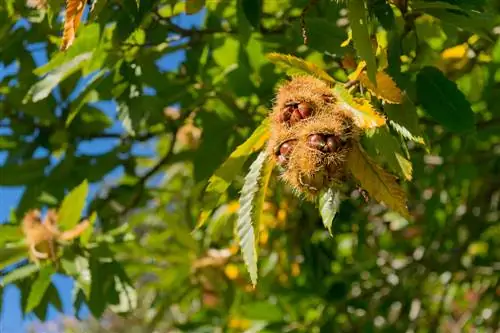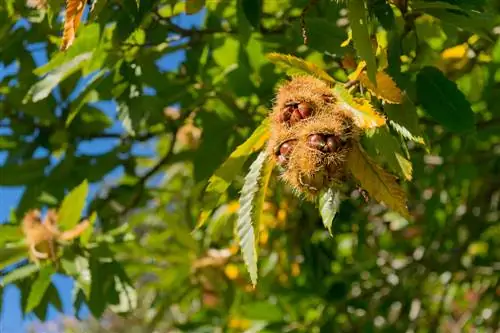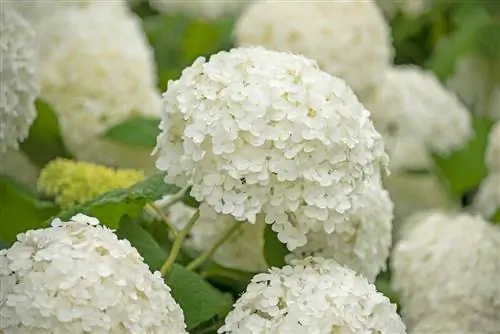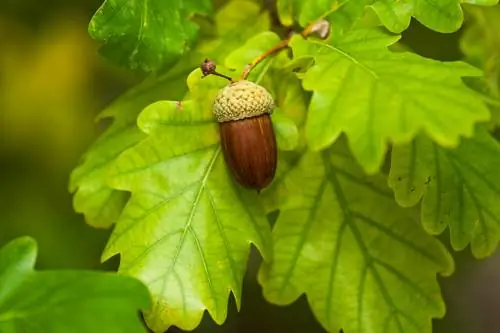- Author admin [email protected].
- Public 2023-12-16 16:46.
- Last modified 2025-01-23 11:21.
There are numerous different varieties of chestnuts, but basically two completely different types - the horse chestnut and the sweet chestnut. These two are not related, even though they look similar. They even belong to different plant families.

What types of chestnuts are there?
There are two main types of chestnut: the inedible horse chestnut (Aesculus) and the edible sweet chestnut (Castanea sativa). Chestnuts are larger, tasty cultivars of the sweet chestnut, while the Australian chestnut (bean tree) is an ornamental legume houseplant.
Basically all chestnuts are suitable for planting in your own garden. However, they need a lot of space and a sunny location. The species differ only slightly in terms of care and soil requirements. An exception, however, is the Australian chestnut, which only has the name in common with the other chestnuts.
The Horse Chestnut
The horse chestnut (bot. Aesculus) is a genus with around twelve different species and belongs to the soap tree family (bot. Sapindaceae). Their fruits are inedible or slightly poisonous. Consumption causes gastrointestinal problems such as nausea, vomiting and diarrhea. They are ideal for autumn crafts and even as animal feed. Horse chestnuts are also very popular as avenue and park trees.
The sweet chestnut or sweet chestnut
The sweet chestnut (bot. Castanea sativa) belongs to the chestnut genus (bot. Castanea) and therefore to the beech family (bot. Fagaceae). As the name suggests, the fruits are edible. Chestnuts are much less common in a harsh area than in a mild climate. In the Middle Ages, many people depended on this food, which is now considered a delicacy, in order not to starve.
The chestnut
Maron refers to the fruits of chestnuts, but especially to the cultivated varieties of sweet chestnuts. The breedings are aimed, for example, at resistance to pests and diseases, longer flowering or harvest times and also the storability of the fruits. The fruits are usually larger and the harvest yield is higher. This makes them particularly suitable for commercial cultivation.
The Australian Chestnut
It belongs to the legume family (bot. Fabaceae) and is often kept as a houseplant. It originally comes from Australia, is evergreen and is also traded here under the name bean tree, which is quite appropriate. The plant grows from a kidney-like bean that only dies after a long time. Even though it practically never blooms indoors, the Australian chestnut is very decorative.
The most important things in brief:
- Horse chestnut: inedible fruit, decorative tree
- Chestnut: tasty, rather small fruit that cannot be stored for long, usually not very frost-tolerant
- Chestnut: large, tasty fruits, can be stored for a long time, high yield, particularly suitable for commercial cultivation
- Australian chestnut: legume, “bean tree”, very decorative houseplant
Tip
If you want to plant a chestnut, then decide beforehand whether and, if so, how you want to use the plant or the fruits.






